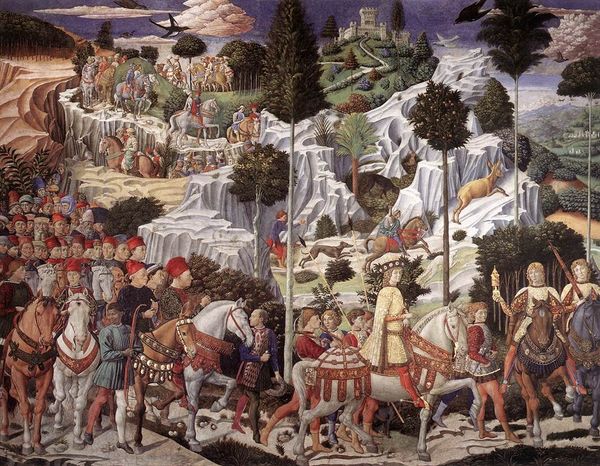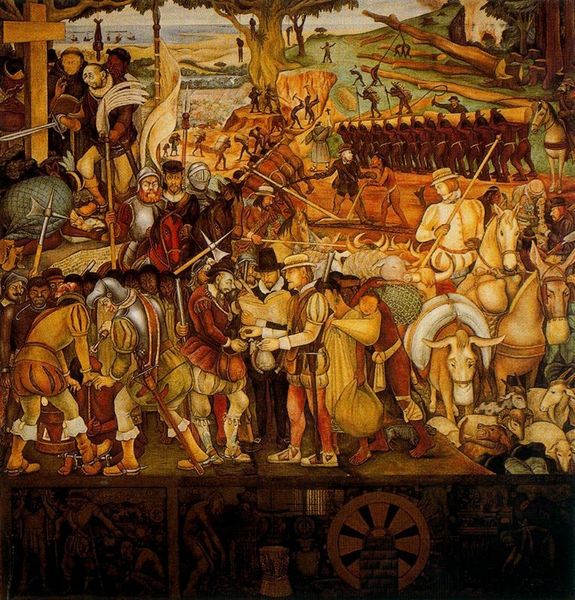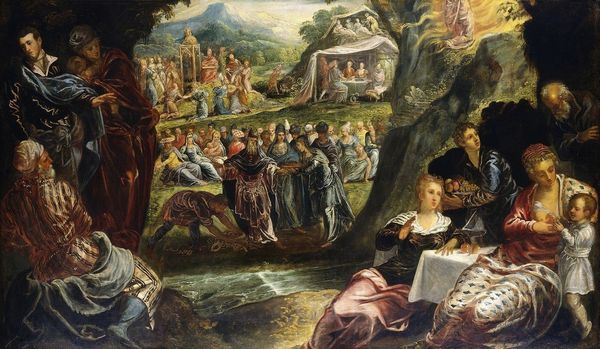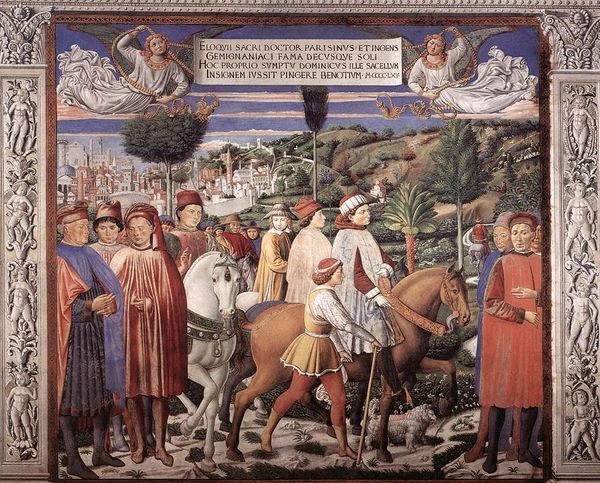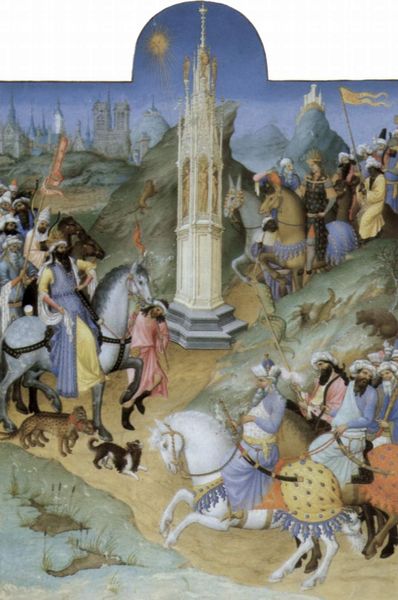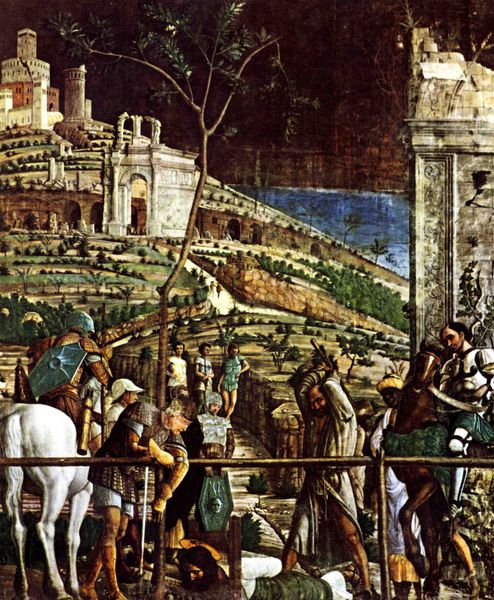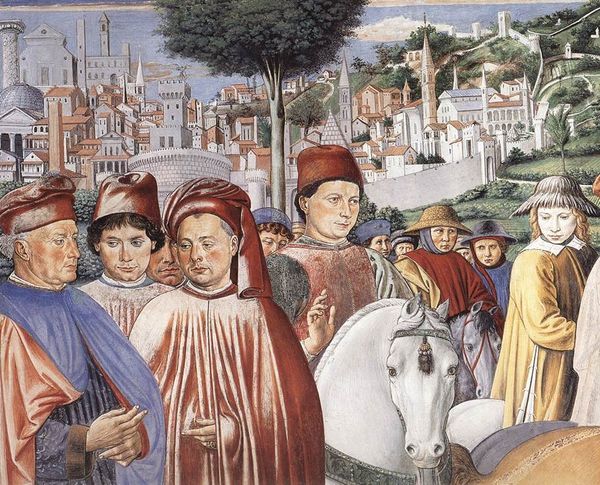
tempera, painting, fresco
#
narrative-art
#
tempera
#
painting
#
landscape
#
figuration
#
fresco
#
oil painting
#
group-portraits
#
christianity
#
painting painterly
#
history-painting
#
academic-art
#
italian-renaissance
#
early-renaissance
#
mixed media
#
christ
Copyright: Public domain
Editor: So, this is Benozzo Gozzoli's "Procession of the Oldest King," a fresco from around 1460. The scene is just teeming with figures. How fascinating that Gozzoli opted for fresco as the primary material—what are your thoughts on the process involved here? Curator: The choice of fresco is quite telling, isn't it? Think about the labour involved in preparing the wall, mixing the pigments, and then the speed required to paint before the plaster dries. It immediately brings a different dimension to how we view the piece. It wasn't just about aesthetic vision, but also practical skills and access to materials like azurite for the blues. Editor: It is difficult to comprehend. So, how would the constraints of the fresco medium impact its meaning, from a materialist viewpoint? Curator: Well, it makes us consider who was involved beyond just the artist. Who prepared the walls? Who ground the pigments? Whose labour made this display of wealth and power possible? Furthermore, a fresco is site-specific; how does that relationship to place change the way we interpret the work compared to, say, an oil painting that could be easily moved? Editor: That is a great observation. It seems to move the meaning away from the artist and closer to society as a whole. Were frescoes common back then? Curator: Absolutely! But think about who commissioned them, where they were placed - usually spaces meant to impress. Frescoes in the Early Renaissance often visually reinforced a patron's social status through this kind of large-scale visual project, literally set in stone or plaster. So how does the material and the location change our perception of something, even something religious like the Adoration of the Magi? Editor: So much to consider! It’s fascinating to consider art in terms of labor and societal factors, not just personal expression. Curator: Precisely. Considering art from a materialist viewpoint challenges us to investigate the entire network of production and consumption surrounding the artwork, and in turn our place in it.
Comments
No comments
Be the first to comment and join the conversation on the ultimate creative platform.
